| November 03, 2008 |  |
MarsDaily Advertising Kit |
| Previous Issues | Oct 31 | Oct 30 | Oct 29 | Oct 28 | Oct 27 |
Phoenix Enters Safe Mode Pasadena CA (SPX) Oct 30, 2008
Pasadena CA (SPX) Oct 30, 2008NASA'S Phoenix Mars Lander entered safe mode late yesterday in response to a low-power fault brought on by deteriorating weather conditions. While engineers anticipated that a fault could occur due to the diminishing power supply, the lander also unexpectedly switched to the "B" side of its redundant electronics and shut down one of its two batteries. During safe mode, the lander stops ... more Strange Martian Landforms Are Paleo Climate Clues  Tuscon AZ (SPX) Oct 30, 2008
Tuscon AZ (SPX) Oct 30, 2008One of the most fun and fascinating aspects of space exploration is discovering geological processes and terrain different from those found on our home planet, says Matt Balme, who is leading a team that's decoding Martian mystery landscapes known as Transverse Aeolian Ridges or TARs. Balme, a research scientist with the Tucson-based Planetary Science Institute, says TARs have no exact ... more US space probe completes successful Mercury fly-pass  Washington (AFP) Oct 29, 2008
Washington (AFP) Oct 29, 2008The US space probe MESSENGER made its second successful fly-by of the year of the planet Mercury on October 6, revealing like never before 30 percent of the solar system's smallest planet, scientists said Thursday. MESSENGER (MErcury Surface, Space ENvironment, GEochemistry and Ranging) soared past the innermost planet's equator at an altitude of 201 kilometers at a speed of ... more NASA's Phoenix Mission Faces Survival Challenges  Pasadena CA (SPX) Oct 29, 2008
Pasadena CA (SPX) Oct 29, 2008In a race against time and the elements, engineers with NASA's Phoenix Mars Lander mission hope to extend the lander's survival by gradually shutting down some of its instruments and heaters, starting today. Originally scheduled to last 90 days, Phoenix has completed a fifth month of exploration in the Martian arctic. As expected, with the Martian northern hemisphere shifting from summer ... more NASA Orbiter Reveals Details Of A Wetter Mars  Pasadena CA (SPX) Oct 29, 2008
Pasadena CA (SPX) Oct 29, 2008NASA's Mars Reconnaissance Orbiter has observed a new category of minerals spread across large regions of Mars. This discovery suggests that liquid water remained on the planet's surface a billion years later than scientists believed, and it played an important role in shaping the planet's surface and possibly hosting life. Researchers examining data from the orbiter's Compact Reconnaissa ... more |
mars-base
 mars-express 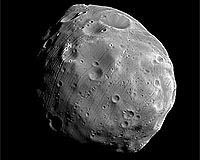 spacetravel  |
 Pasadena CA (SPX) Oct 23, 2008
Pasadena CA (SPX) Oct 23, 2008NASA's Phoenix Mars Lander has finished scooping soil samples to deliver to its onboard laboratories, and is now preparing to analyze samples already obtained. Scientists are anxious to analyze the samples as the power Phoenix generates continues to drop. The amount of sunlight is waning on Mars' northern plains as late-summer turns to fall. The spacecraft's robotic arm is digging into the ... more Chandrayaan-I To Help Generate Comprehensive Moon Maps  Sriharikota, India (PTI) Oct 23, 2008
Sriharikota, India (PTI) Oct 23, 2008Scientists world over have detailed maps of Mars but not of the moon. Chandrayaan-I, India's maiden moon mission, is carrying 11 instruments which will help prepare comprehensive maps of the earth's only natural satellite -- the moon. The maps could be of immense help when Indian Space Research Organisation (ISRO) and other space agencies plan to land spacecraft on the lunar surface or ... more Laser could aid search for life on Mars  Idaho Falls, Idaho (UPI) Oct 21, 2008
Idaho Falls, Idaho (UPI) Oct 21, 2008 U.S. government scientists say they've developed technology that enables a laser to detect minuscule traces of cells in a mineral likely present on Mars. Researchers said the instrument they created at the U.S. Department of Energy's Idaho National Laboratory could help scientists select martian surface samples with the most promise for yielding signs of life. The new laser blast ... more Europe delays ExoMars mission, again  London (UPI) Oct 18, 2008
London (UPI) Oct 18, 2008 The European Space Agency says it's delaying its unmanned mission to Mars until 2016 and may seek help from Russia and the United States. It is the second big delay for the ExoMars Rover -- Europe's flagship space mission, the BBC reported Saturday, noting the launch already had been pushed back from 2011 to 2013 because of difficulties with the early stages of the mission's design. ... more |
spacetravel
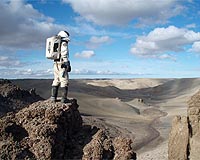 mars-phoenix 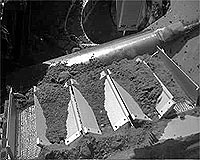 mars-life 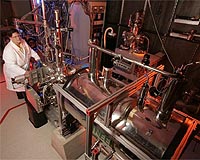 |
 Tuscon AZ (SPX) Oct 20, 2008
Tuscon AZ (SPX) Oct 20, 2008An odd, solitary hill rising part-way down an eroding slope in Mars' north polar layered terrain may be the remnant of a buried impact crater, suggests a University of Arizona planetary scientist who studied the feature in a new, detailed image from the HiRISE camera onboard NASA's Mars Reconnaissance Orbiter. HiRISE, or the High Resolution Imaging Science Experiment, headed by Alfred ... more HiRISE Camera Reveals Rare Polar Martian Impact Craters  Tuscon AZ (SPX) Oct 17, 2008
Tuscon AZ (SPX) Oct 17, 2008An odd, solitary hill rising part-way down an eroding slope in Mars' north polar layered terrain may be the remnant of a buried impact crater, suggests a University of Arizona planetary scientist who studied the feature in a new, detailed image from the HiRISE camera onboard NASA's Mars Reconnaissance Orbiter. The north polar layered deposits are stacked up to several kilometers thick and ... more Phoenix Mars Mission Honored By Popular Mechanics  Pasadena CA (SPX) Oct 17, 2008
Pasadena CA (SPX) Oct 17, 2008NASA's Phoenix Mars Mission is being honored with a Breakthrough Award by Popular Mechanics magazine in New York City. In its fourth year, the awards recognize innovators who improve lives and expand possibilities in science, technology, engineering and exploration. Peter Smith of the University of Arizona, principal investigator for Phoenix, is accepting the award on behalf of the Phoenix ... more ESA Closes In On The Origin Of Mars' Larger Moon  Parsi, France (ESA) Oct 17, 2008
Parsi, France (ESA) Oct 17, 2008European space scientists are getting closer to unravelling the origin of Mars' larger moon, Phobos. Thanks to a series of close encounters by ESA's Mars Express spacecraft, the moon looks almost certain to be a 'rubble pile', rather than a single solid object. However, mysteries remain about where the rubble came from. Unlike Earth, with its single large moon, Mars plays host to two ... more
|
mars-life
 mars-phoenix 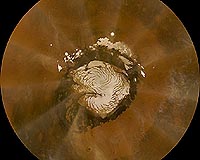 mars-mers 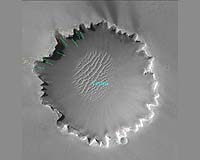 |
| Previous Issues | Oct 31 | Oct 30 | Oct 29 | Oct 28 | Oct 27 |
| The contents herein, unless otherwise known to be public domain, are Copyright 1995-2007 - SpaceDaily. AFP and UPI Wire Stories are copyright Agence France-Presse and United Press International. ESA Portal Reports are copyright European Space Agency. All NASA sourced material is public domain. Additional copyrights may apply in whole or part to other bona fide parties. Advertising does not imply endorsement, agreement or approval of any opinions, statements or information provided by SpaceDaily on any web page published or hosted by SpaceDaily. Privacy statement |